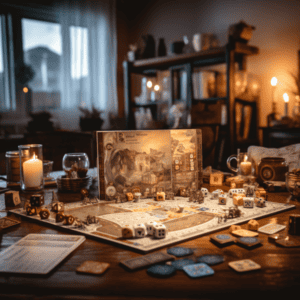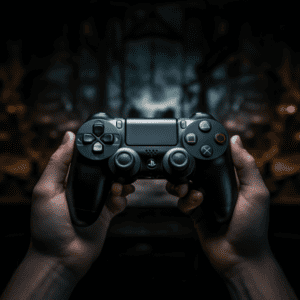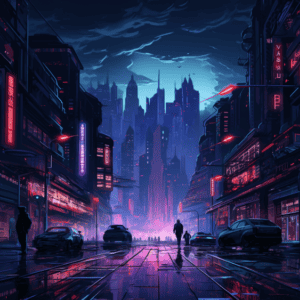In the world of JRPGs, art style is everything. The visuals draw us into new worlds, evoke emotion, and bring imaginative characters to life.
But with so many stylistic approaches across the genre, one question remains hotly debated among fans: Which game has the best JRPG art style?
In this article, we’ll analyze and compare standout JRPG art styles (1) to highlight those that elevate immersion, storytelling, and gameplay. From anime-inspired classics to sweeping fantasy landscapes, realistic portraits and beyond, we’ll explore genres, examine stunning environments, and showcase diversity.
JRPG enthusiasts, take note – we’re about to unveil the strokes behind the most captivating art in gaming. Let’s dive in to determine which title wears the art style crown!
KEY TAKEAWAY
Which game has the best JRPG art style?
Some said it is P5R, DQXI, or FFXVI, but really, it is just based on your art preferences.
Captivating Art Design: JRPGs with Beautiful Environments & Unique Biomes
Transporting players to fully realized worlds is the hallmark of great JRPG art design. Two games that excel here are Final Fantasy XII and Xenoblade Chronicles. Both craft sprawling environments and varied biomes that feel realistically integrated, not pieced together.
Final Fantasy XII brings the world of Ivalice to life through divergent regions like sun-baked deserts, vibrant rainforests, and meticulously detailed cities. No two areas feel repetitive. One standout is the fantastical city of Archades, an aerial metropolis with gothic aesthetics. Hovering magical elevators, steampunk-inspired machines, and opulent architecture make it feel like a real place with depth and purpose.
Similarly, Xenoblade Chronicles sculpts the vast open world of the Bionis. Each zone from knee-high grasslands to glowing fungal jungles contains bespoke flora, fauna, and topography. The organic integration creates ecological credibility – like these environments truly evolved together over eons. Areas feel hand-crafted, not procedurally generated.
By crafting varied, fully-fleshed out environments, FFXII and Xenoblade pull players into their worlds through immersion. We believe in the worlds because they feel real, not superficial. That’s the mark of masterful art direction.
Exploring Realistic Art Styles in JRPGs: Beyond Anime Aesthetics

JRPGs are synonymous with anime-inspired designs, but some titles forge new ground with semi-realistic and painterly art styles. Two standouts are Ni No Kuni and Dragon Quest XI.
Ni No Kuni elicits whimsical storybook vibes by blending cartoonish characters with diorama-like environments. Backdrops resemble miniature models photographed up close, conjuring fantastical realism. Light bloom, depth of field blur, and soft textures heighten the effect. Characters retain cartoon stylization to pop against environments and avoid the uncanny valley.
Dragon Quest XI takes a dramatic turn for the franchise with a cell-shaded 3D aesthetic (2). Akira Toriyama’s signature character designs gain new dimension and life from realistic lighting/textures and cel animation-inspired animations. Environments also contain realistic natural elements like swaying grass and rippling water. This hybrid art style strikes an appealing balance between fantasy and realism.
By stylistically anchoring unrealistic characters and stories in quasi-lifelike worlds, Ni No Kuni and Dragon Quest XI tickle imaginations. Their art styles invite players to suspend disbelief and become engrossed in the adventure.
The Best JRPGs with Visually Stunning Environments on PC
The PC platform offers technical advantages that let certain JRPG art styles really shine. Two PC titles lauded for their cutting-edge environments are Final Fantasy XV and Lost Odyssey.
Final Fantasy XV sets new visual benchmarks on PC with its REDengine. Luminescent moonlit landscapes, intricately detailed textures, and photorealistic elements like hair/skin showcase high-fidelity graphics possible on PC. Environments burst with rich detail at 4K resolution, from wispy grass to cracks in the pavement. Higher frame rates also bolster the realism through fluid environmental animations.
Though older, Lost Odyssey still impresses with sprawling environments and cinematic visual effects. The world features diverse biomes with pin-sharp details at high resolutions. Changing weather/lighting paints landscapes differently. Epic magic abilities harness particles, depth of field blur, and slow motion to amplify visual impact. Lost Odyssey squeezes the most out of Unreal Engine 2.0 to create stunning environments.
FFXV and Lost Odyssey exemplify the expanded artistic possibilities of JRPGs on PC. Their lush, intricately detailed open worlds spring to life and pull players deeper into the experience through their technical brilliance.
Balancing Realism and Fantasy: Art Styles in JRPGs
Blending realism with fantasy is a delicate balance in JRPG art direction. NieR:Automata and Octopath Traveler strike that balance elegantly via opposing approaches.
NieR:Automata opts for fragmented realism – the ruined sci-fi world feels grounded and bleak, while characters retain stylized designs. Detailed environments like crumbling temples and deserted shopping malls contrast starkly with characters. This duality mirrors existential themes of humanity and transhumanism. Grayscale color schemes also accentuate the grim setting.
Conversely, Octopath Traveler unified its sprite characters and “HD-2D” environments. 16-bit style characters feel right at home in the diorama-like world via shared high color saturation, textured backgrounds, and limited animated details. The cohesive art direction preserves suspension of disbelief. This complementary fantasy/retro style became Octopath’s defining visual innovation.
Despite opposite approaches, NieR:Automata and Octopath Traveler succeed similarly. Their art styles balance realism and fantasy to support gameplay and storytelling. This tricky equilibrium, when done right, creates stylistic harmony.
More on what are the characteristics of JRPG art style.
Artistic Diversity in JRPGs: From Classic Anime to Realistic Portraits
JRPGs across eras showcase remarkable artistic range. For example, Dragon Quest VIII (2004) popularized anime aesthetics, while modern titles like Triangle Strategy (2022) use 2D HD realism.
Dragon Quest VIII was a high-water mark for anime-inspired graphics in the PS2 era. Colorful, expressive characters and vibrant world building typify the nostalgic anime JRPG style. Visual variety came from Akira Toriyama’s signature character designs translating 2D artwork to 3D cel-shaded models (a new technique). This art style defined early 3D JRPGs.
In contrast, Triangle Strategy employs 2D HD character portraits during dialogue over 3D environments. Characters emote realistically with subtle expressions in illustrated portraits. Detailed clothing textures and shading give portraits photographic depth. During gameplay, models appear more stylised to complement portraits. This hybrid 2D/3D art direction shows how JRPGs continue expanding artistic diversity today.
While anime styles still thrive, modern hardware enables advanced realism. Yet classic sprite-based JRPGs also endure through indie games. The artistic range across decades proves the genre’s visual creativity and flexibility.
More on beauty of JRPG art.
Conclusion
The best JRPG art styles enhance gameplay and storytelling through immersion. They invite our imagination to believe in fantastical worlds and characters. From the magnificent kingdoms of Final Fantasy to the twisted futures of NieR, artistic vision elevates JRPGs into unforgettable experiences.
Of course, beauty is subjective. Weigh in with your own thoughts on standout JRPG art styles! What captivated you most on these memorable journeys? Let’s keep the conversation going and appreciate the masterful art, both classic and cutting edge, that brings our favorite games to life.
More on evolution of JRPG visuals.
References
- https://gamerant.com/games-with-the-best-art-styles/#:~:text=1%20Persona%205%20Royal&text=Atlus’%20Persona%205%20Royal%20became,Persona%20franchise%20as%20a%20whole.
- https://www.thegamer.com/best-jrpg-style-design-look/






